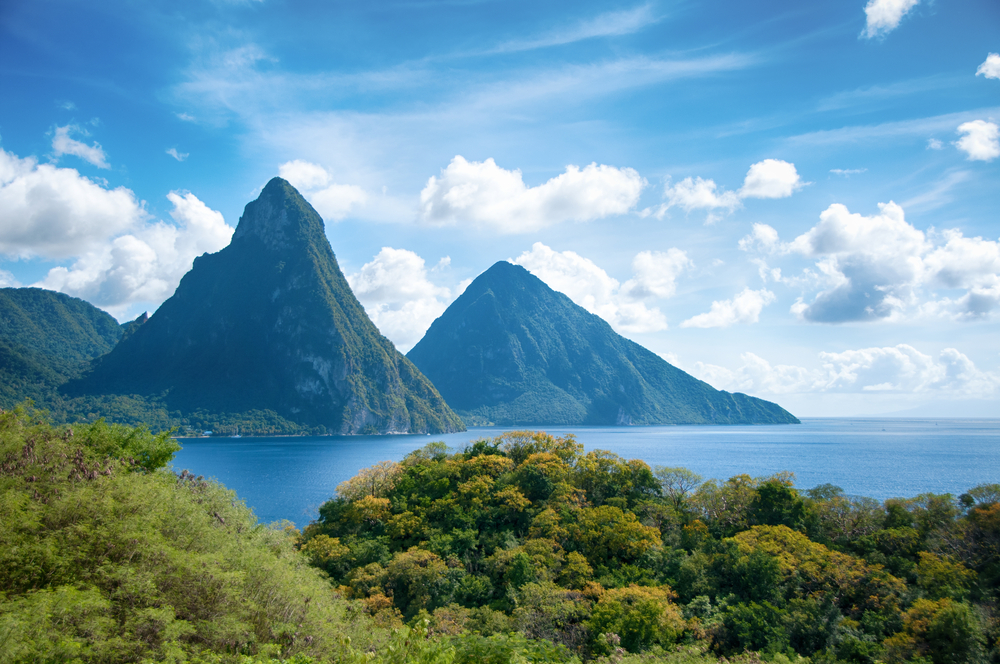Caribbean World Heritage Sites: St Lucia’s Piton Mountains
by Karen Rollins Feb 8, 2021

The Caribbean is full of unique treasures, and many of them have been recognised for their historic value and natural beauty as UNESCO World Heritage Sites.
In St Lucia, two famous and recognisable landmarks known as The Pitons, were inscribed on the list in 2004.
The Pitons are two mountainous volcanic spires or plugs located on the southwest of the island, either side of Jalousie Bay, close to the towns of Soufrière and Choiseul.
A popular hiking challenge for tourists and locals, Gros Piton is 770 metres (over 2,500ft) high, while Petit Piton is smaller at only 743 metres (over 2,400ft) high, but is actually harder to climb because it’s steeper. The peaks are linked by the Piton Mitan ridge.
The views of St Lucia and Pigeon Island from the top of both Pitons, as well as the ridge, are said to be breathtaking but visitors are advised to use a guide to navigate the tricky trail to the top of Gros Piton, and only attempt Petit Piton if you’re an experienced climber.

Both peaks are appealing to nature lovers because of their covering of lush, green rainforest vegetation. At least 148 plant species have been found on the larger peak, according to UNESCO, while the smaller peak and the intervening ridge have 97 and among them are eight rare tree species.
Gros Piton is also home to 27 bird species (five of which are endemic), as well as three indigenous rodents, one opossum, and three amphibians.
The water surrounding the Pitons is great for divers to explore as it’s abundant with marine life, and with the spires extending underwater as far as they rise above, the ‘wall dives’ are said to be a truly exceptional experience.
However, if diving and hiking sound too strenuous, you can always find a spot nearby or on a boat from the water, to simply gaze at these striking twin peaks, and stand in awe of their natural beauty.








